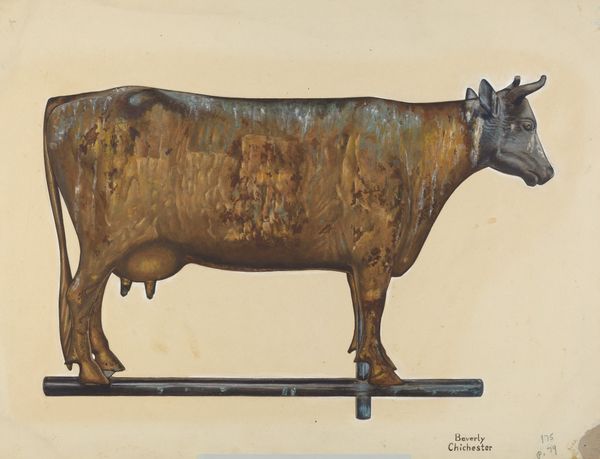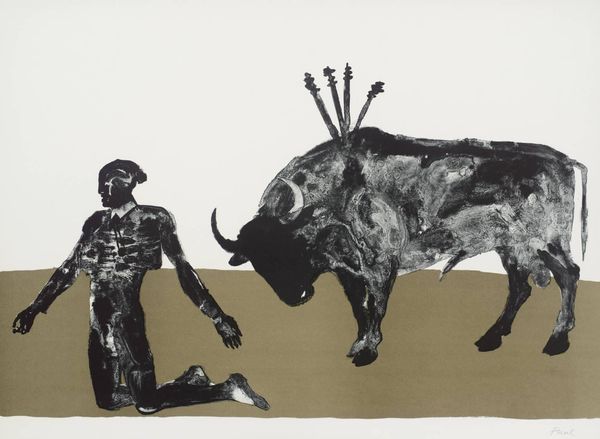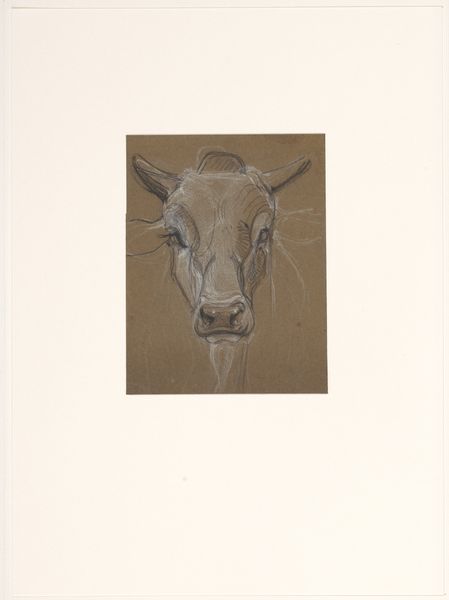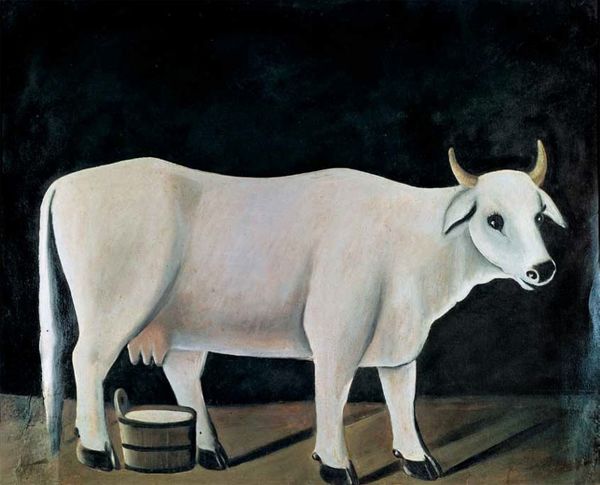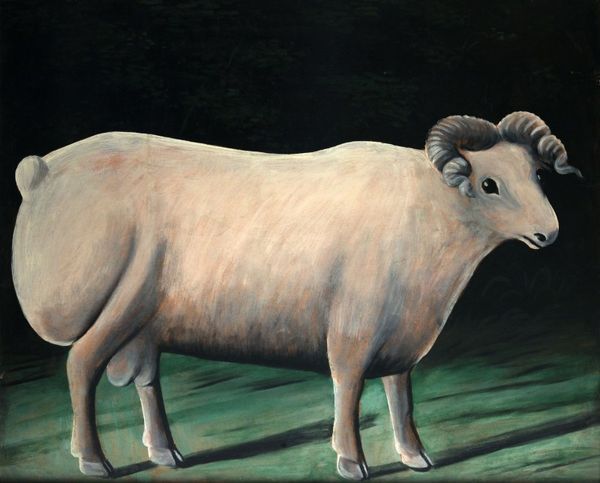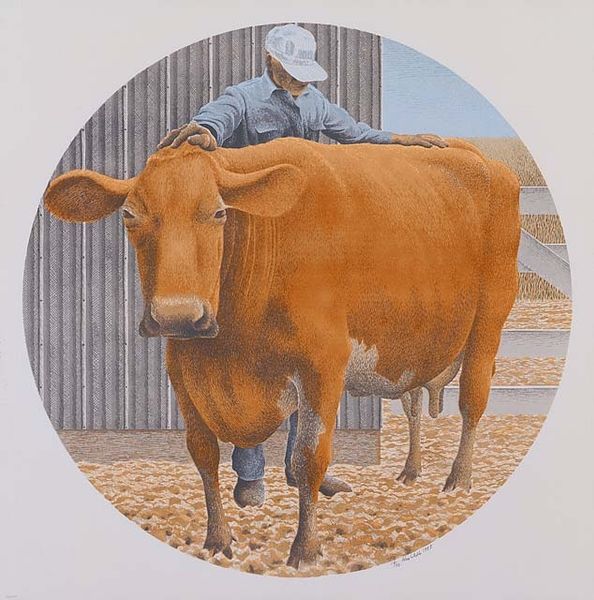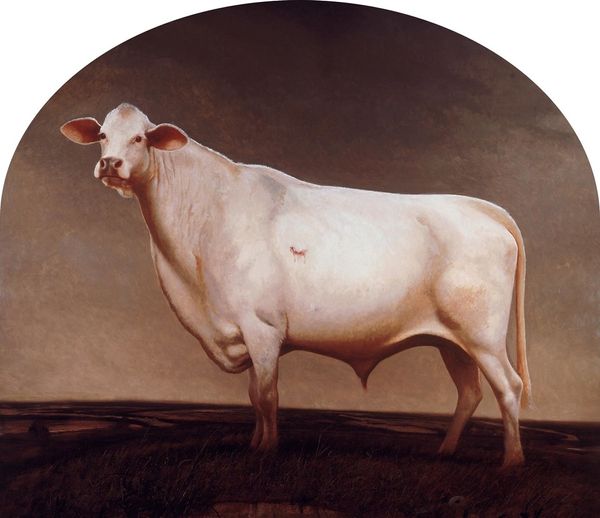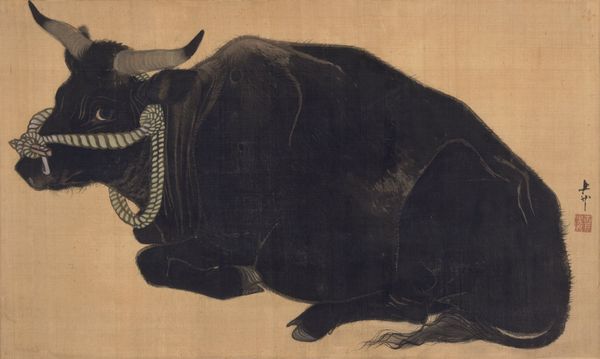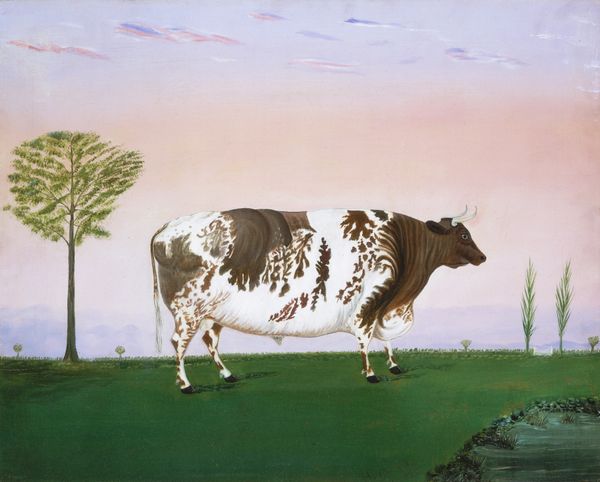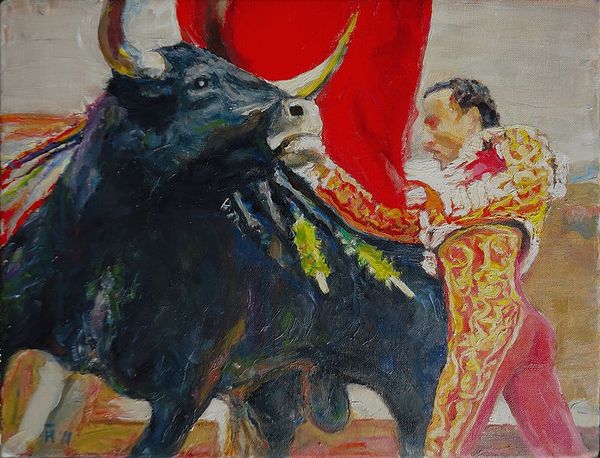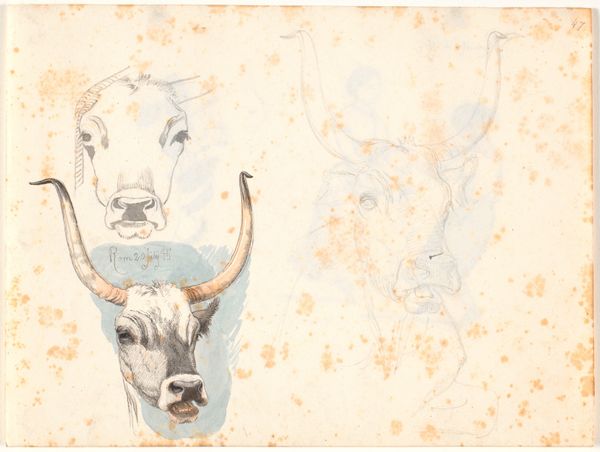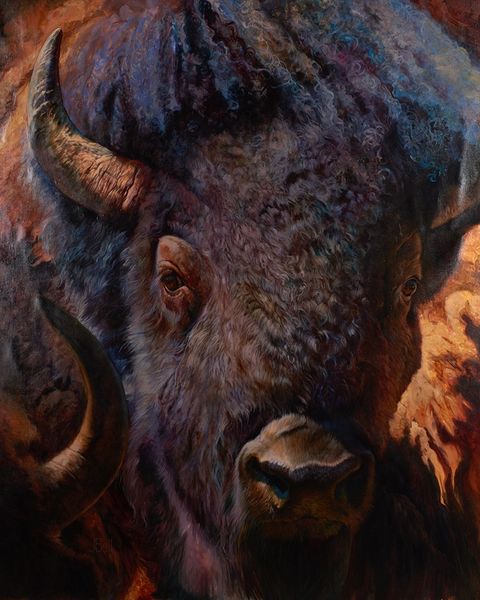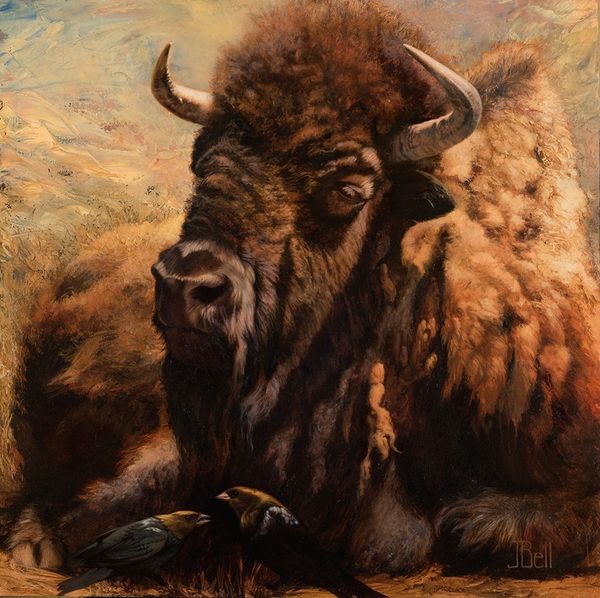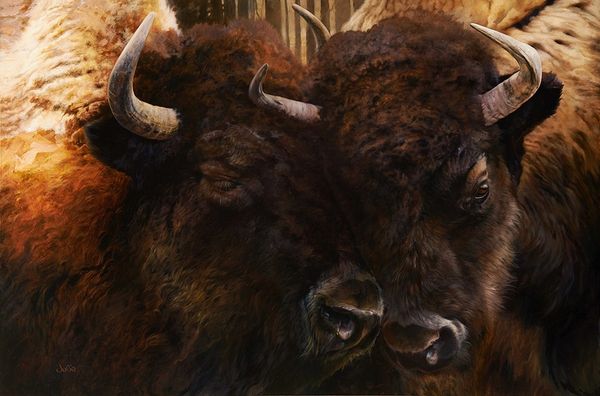
painting, ink
#
painting
#
asian-art
#
japan
#
oil painting
#
ink
#
realism
Dimensions: 60 1/4 × 67 in. (153.04 × 170.18 cm) (image)
Copyright: Public Domain
Editor: Here we have Mochizuki Gyokusen's *Black Bull*, created around the 19th century. It's a striking ink painting. The animal nearly fills the composition and possesses immense visual weight. What can you tell me about it from a formalist perspective? Curator: Indeed. The composition commands attention through its masterful exploitation of positive and negative space. Observe how the artist uses subtle gradations of ink wash to describe the bull’s musculature. This imbues the figure with a remarkable sense of mass and volume despite the relative economy of line. Do you notice how the painter's employment of verticality in this piece enhances its dynamism? Editor: It does seem very monumental, almost pushing forward. What’s the effect of using what looks like a deliberately limited tonal range of black ink? Curator: Precisely. The constrained palette forces our eyes to reconcile shape, form, and tone in this depiction, thereby appreciating the artistry behind its texture. Also, what's compelling about the composition is that it almost eliminates perspectival recession. Editor: Interesting. It flattens the picture plane, making it more about shape and line than depth. The stark contrast, bold line, and restrained detail—all are about formal, rather than representative, qualities. Thanks for this perspective. Curator: The power of such formal constraints reveals a profound sense of order. It invites us to appreciate the intrinsic aesthetic properties of ink, line, and form.
Comments
minneapolisinstituteofart almost 2 years ago
⋮
Oxen, one of the 12 kinds of animals in the Chinese zodiac, have been valued as beasts of burden in Japan since prehistoric times. After Buddhism arrived in the mid-6th century, oxen emerged as emblems of Zen Buddhism, particularly in the Ten Oxherding Songs, a series of Zen parables describing the disciple’s journey from initiation to enlightenment. Uniting the quotidian realism of Shijō school painting and elements of Western-style perspective and shading, this image conveys the powerful presence of the bull. The painting was perhaps commissioned by a lord or wealthy merchant in celebration of his cherished beast. Gyokusen enjoyed the patronage of the Imperial Palace and was key to the modernization of art in Kyoto and the founding of the Kyoto Prefectural School of Arts.
Join the conversation
Join millions of artists and users on Artera today and experience the ultimate creative platform.
